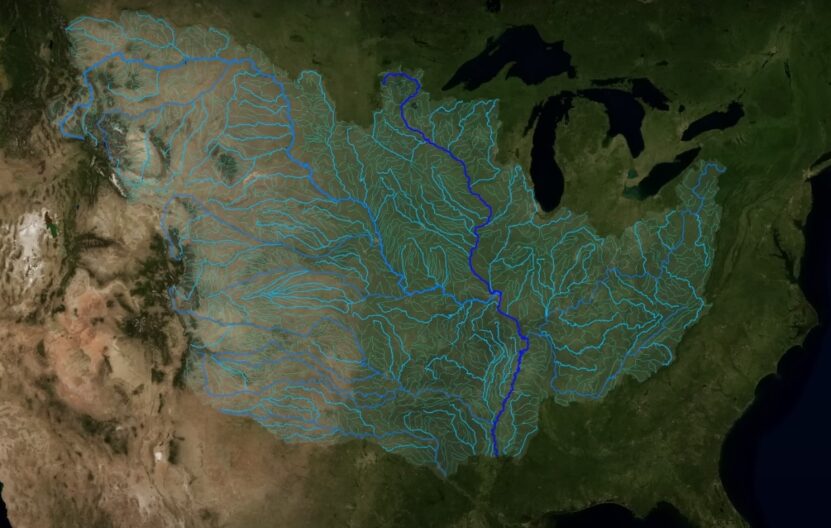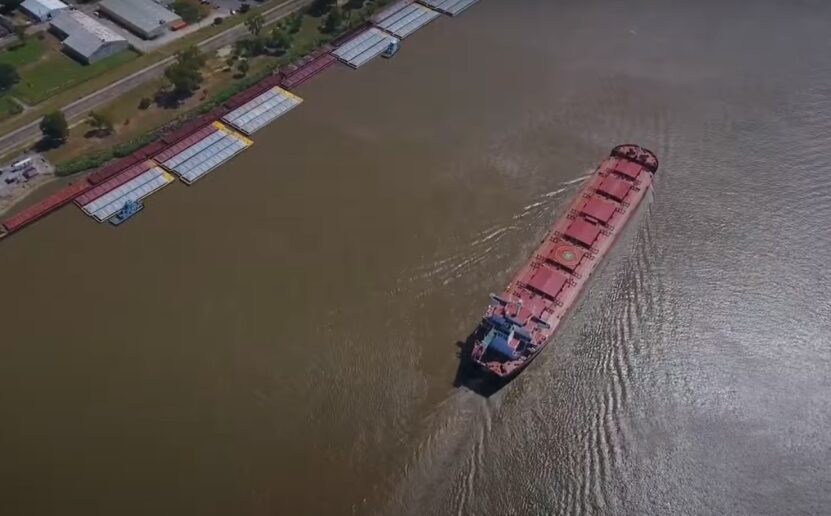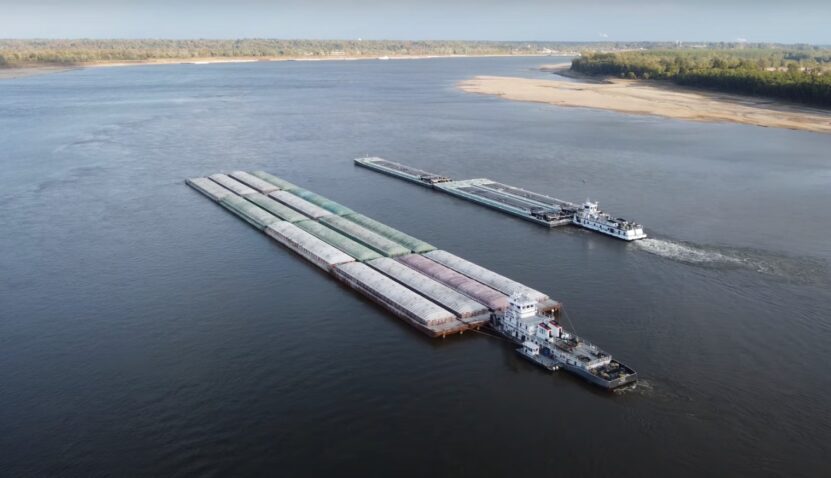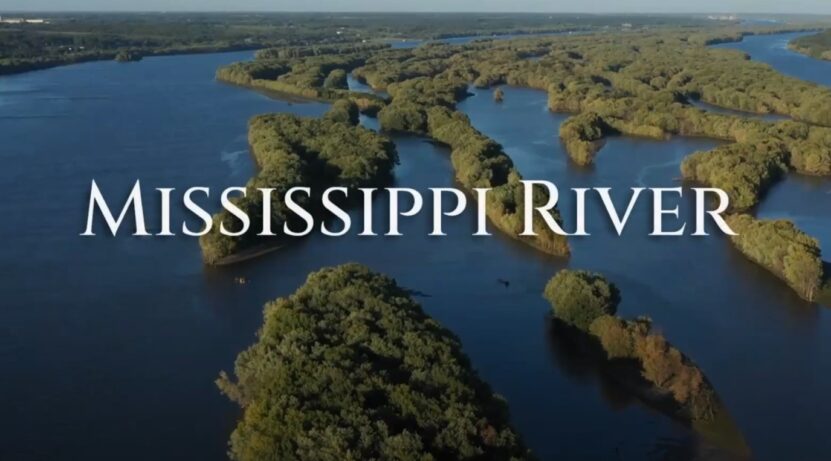Spanning a length of thousand miles, depending on the measurement method and time of year, the Mississippi River’s flowing through the country is as varied as it is long. It flows through or borders ten states showcasing the diverse geographical and cultural tapestry of the nation.
The Mississippi River has been a witness to centuries of change, from the early days of Native American settlements to the modern era of bustling cities and industrial growth. It has seen the rise and fall of empires, the birth of jazz and blues, and the ongoing struggle and triumph of the American people.
Here, you will learn about many things, including:
- The Mississippi River varies in length between 2,300 and 2,552 miles
- The river flows through or borders ten states
- The river is a vital economic artery of the country, mainly for grain shipping
Today, we want to talk about the most important physical characteristics of the river and focus on its depth.
Physical Characteristics of the Mississippi River

The Mighty Mississippi, one of the major river systems in the world, is renowned for its impressive size, habitat diversity, and biological productivity. This river’s physical characteristics are as vast and varied as the landscapes it traverses.
- Varies between 2,300 and 2,552 miles, changing with seasons and geological activities.
- Ranges from 20-30 feet at its narrowest at Lake Itasca to 11 miles at Lake Winnibigoshish near Bena, MN.
- Less than three feet at its headwaters, reaching up to 200 feet deep in New Orleans.
- Average flow rate of 600,000 cubic feet per second in New Orleans.
Path and Flow of the Mississippi River
The Mississippi River’s journey is a remarkable testament to nature’s complexity and grandeur.
The river flows through or bordering ten states:
- Minnesota
- Wisconsin
- Iowa
- Illinois
- Missouri
- Kentucky
- Tennessee
- Arkansas
- Mississippi
- Louisiana
The river’s average speed of about 1.2 miles per hour belies the power and persistence of its flow. In New Orleans, the speed increases to around three miles per hour, reflecting the changing dynamics of the river’s course.
This variation in speed is influenced by numerous factors, including water levels, riverbed topography, and seasonal changes. The path of water from its source at Lake Itasca to the Gulf of Mexico takes approximately three months, a slow and steady voyage that mirrors the river’s enduring presence in American life.
Volume and Commerce of the Mississippi River

With an average flow rate of 600,000 cubic feet per second at New Orleans, the river is a major artery for commerce and trade. This immense volume of water is a critical resource, supporting a wide range of economic activities and sustaining livelihoods along its course.
60% of all grain exported from the United States is shipped via the Mississippi River, highlighting its pivotal role in the nation’s agricultural economy. The river’s volume facilitates the transport of vast quantities of goods, making it a key component in the supply chain.
The Port of South Louisiana and the Port of New Orleans, which rely heavily on the river, are bustling hubs of activity, moving goods not just across the country but around the world. The economic impact of the Mississippi extends beyond commerce.
The river’s volume is integral to various industries, including fishing, tourism, and energy. It supports a complex network of businesses and communities, contributing significantly to the regional and national economy. The river’s role in commerce is a story of human ingenuity and natural resources coming together, creating a legacy of prosperity and progress.
The Mississippi River, with its vast volume and strategic location, continues to be a vital artery for commerce, a testament to its enduring significance in American economic history. Its waters carry more than just cargo; they carry the story of a nation’s growth and the promise of its future.
Wildlife and Ecosystem
The Mississippi River is a thriving hub of biodiversity, supporting an astonishing array of wildlife. More than 260 species of fish, 145 species of amphibians, and 50 species of mammals call the Mississippi River basin their home.
The diversity is a direct result of the river’s vast habitat diversity and biological productivity. The river’s ecosystem is a complex aquatic and terrestrial habitats, each playing a crucial role in maintaining the ecological balance. The fish species in the Mississippi range from tiny shiners to massive catfish, each adapted to different segments of the river.
The amphibians, including various species of frogs and salamanders, thrive in the river’s wetlands, playing a vital role in the food chain. The presence of such a diverse group of mammals, from beavers and otters to deer and bears, highlights the river’s importance as a wildlife corridor.
These mammals depend on the river for food, water, and habitat, and in turn, contribute to the ecological dynamics of the region. The river’s flow, water quality, and surrounding landscapes all influence the health and diversity of its ecosystems.
Conservation efforts are crucial in preserving this biodiversity, ensuring that the Mississippi continues to be a haven for wildlife and a natural treasure for future generations.
Cultural and Historical Significance of the Mississippi River

The Mississippi River holds a profound place in American culture and history. It has been a muse for artists, a gateway for explorers, and a lifeline for communities. The river has inspired countless songs, stories, and artworks, reflecting its deep impact on the American psyche.
Numerous musicians, like Sam Cooke, Johnny Cash, and Tina Turner, have drawn inspiration from the river, creating songs that capture its essence. The river’s historical significance is equally profound.
Native Americans have lived along its banks for thousands of years, utilizing the river for transportation, food, and as a central part of their cultural and spiritual lives.
The arrival of European explorers, like Hernando de Soto in 1541, marked the beginning of a new era in the river’s history, one that would see it become a pivotal site in the development of the United States.
The Mississippi River has been a witness to key moments in American history, from the early days of exploration to the Civil War and the industrial revolution. It has been a boundary, a battleground, and a pathway to freedom for many.
The river’s cultural and historical significance is a tapestry woven from the many stories and events that have taken place along its waters, making it a living monument to American history.
The Mississippi River, in its flow and stillness, tells the story of a nation – its struggles, triumphs, and the ongoing journey towards progress and understanding. It is more than a river; it is a symbol of the American experience.
FAQs
Is it safe to swim in the Mississippi River?
It’s generally not recommended to swim in the Mississippi River due to strong currents, pollution in certain areas, and boat traffic. Safety varies by location, so local advisories should be checked.
What is the deepest river in the US?
The deepest river in the United States is the Hudson River, with depths reaching over 200 feet in the World’s End near West Point.
How hard is it to swim in the Mississippi River?
Swimming in the Mississippi River can be challenging due to its strong and unpredictable currents, varying depths, and debris.
What is the biggest fish in the Mississippi River?
The largest fish species in the Mississippi River is the Blue Catfish, which can grow up to 100 pounds or more.
Is the Mississippi River a dead zone?
The Mississippi River itself is not a dead zone. However, it contributes to the formation of a large dead zone in the Gulf of Mexico due to nutrient runoff, primarily nitrogen and phosphorus, which lead to algal blooms and subsequent oxygen depletion.
Closing Thoughts
From its humble beginnings at the shallow headwaters, where it’s merely a few feet deep, to the impressive depths in New Orleans, the river’s depth mirrors its journey through diverse landscapes.
Its depth variation is crucial for the river’s role as a major navigational and commercial route, supporting vast economic activities. The deep waters near its mouth play a vital role in sustaining a rich aquatic ecosystem as well as the economy of the country.
If you want to read more interesting subjects, be sure to visit our website.
